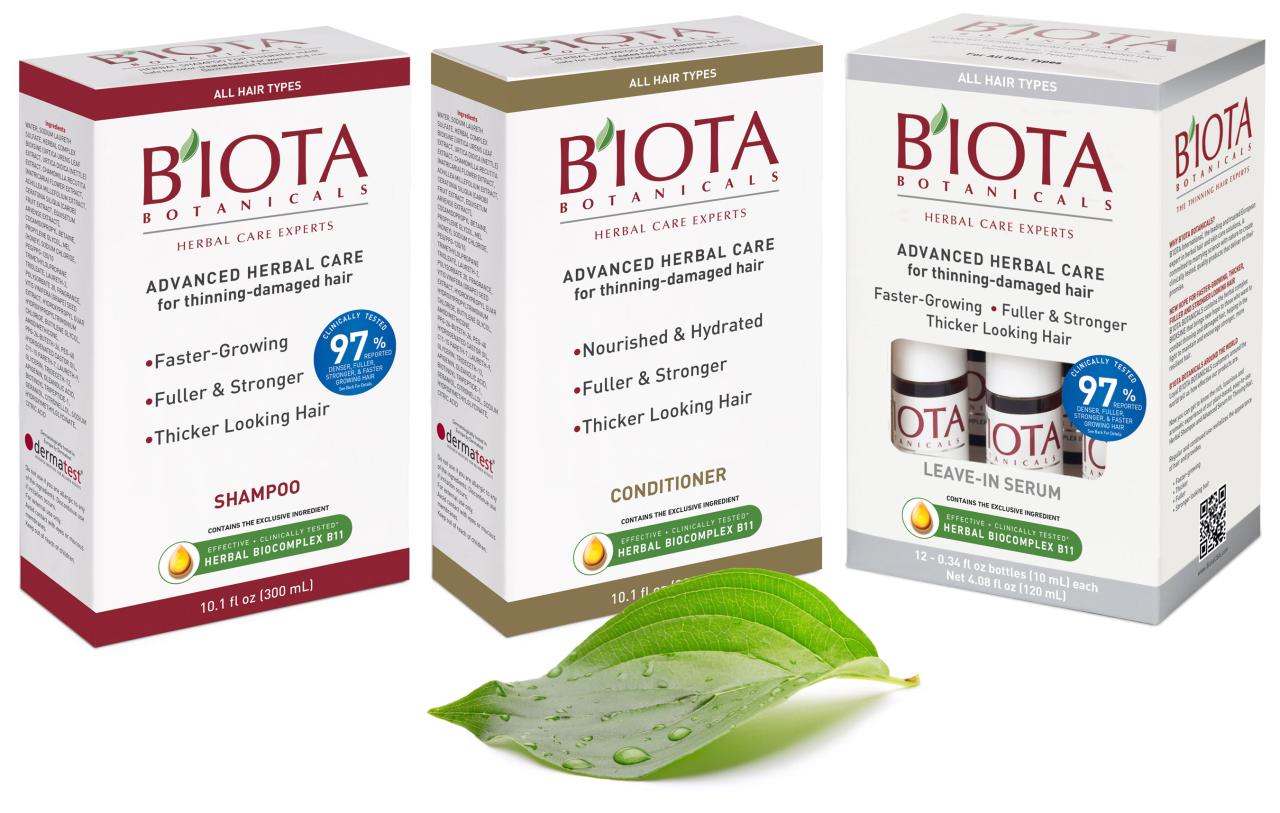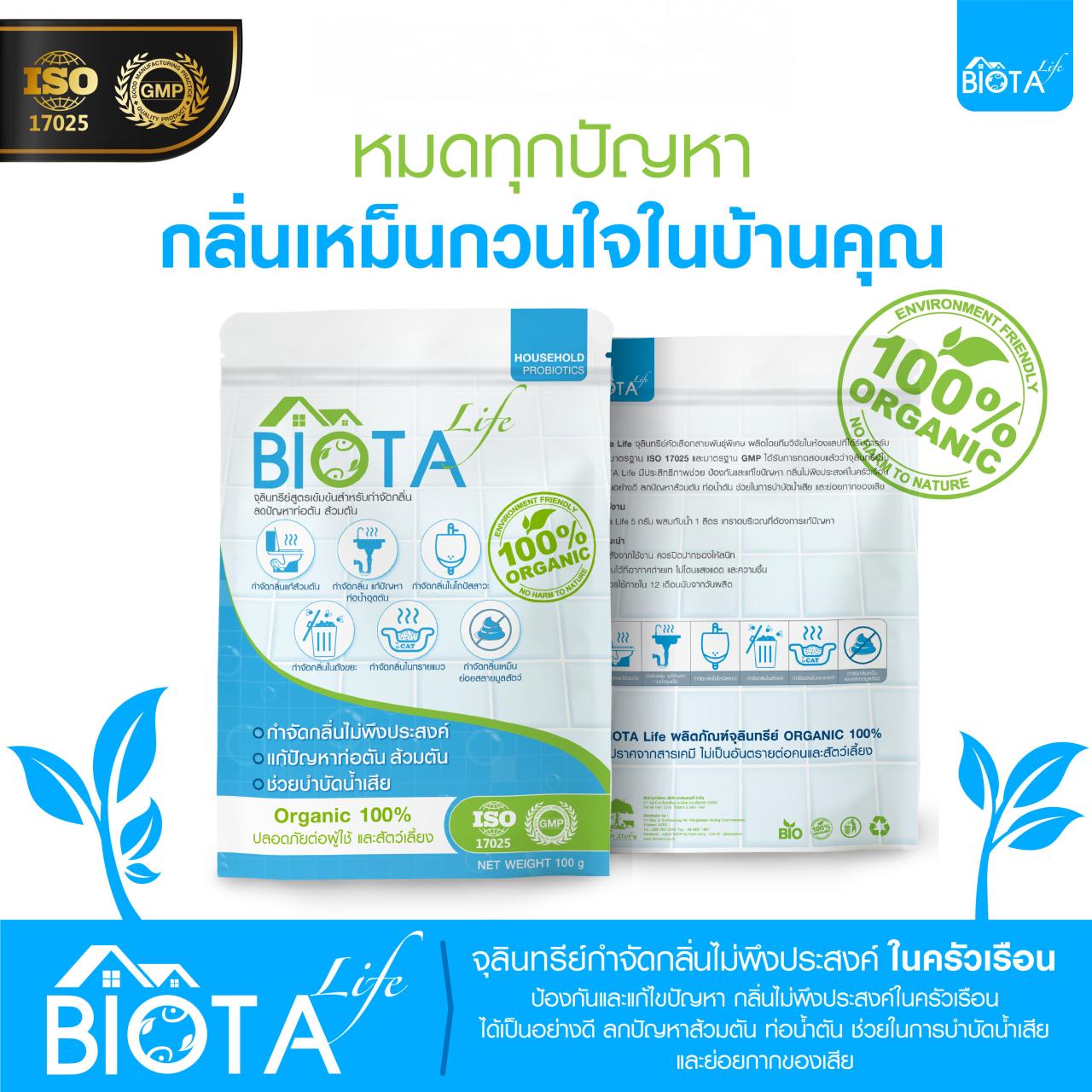How to Reap the Benefits of Biota Herb in Your Daily Life sets the stage for this enthralling narrative, offering readers a glimpse into a story that is rich in detail with search engine journal author style and brimming with originality from the outset.
Biota herb, also known as Thuja occidentalis, has a rich history of traditional uses, and recent scientific research has begun to unravel its potential health benefits. This versatile plant offers a range of applications, from soothing respiratory ailments to promoting skin health and even adding a unique flavor to culinary creations.
From its ancient roots in traditional medicine to its modern-day applications, Biota herb has captured the attention of both health enthusiasts and scientific researchers. Its journey from a humble herb to a potential therapeutic agent is a testament to the power of nature and the enduring pursuit of well-being.
What is Biota Herb?

Biota herb, also known as thuja, is a popular evergreen conifer that has been used for centuries for its medicinal and ornamental properties. It is a versatile plant that can be grown in a variety of climates and is often used in landscaping, herbal remedies, and traditional medicine.
Biota herb, with its calming properties, can be a welcome addition to your daily routine. Whether you prefer to incorporate it into your diet or enjoy its soothing aroma through essential oils, the benefits are numerous. And for those seeking to cultivate a green thumb, Propagating African Violets: A Foolproof Step-by-Step Guide provides a detailed guide to nurturing these vibrant flowers, a perfect complement to the tranquility fostered by biota herb.
From creating a serene atmosphere to enhancing your well-being, biota herb offers a natural path to a more balanced life.
Botanical Name and Common Names
The botanical name for biota herb is
-Thuja occidentalis*, which translates to “western arborvitae.” It is also known by several other common names, including
- American arborvitae
- Northern white cedar
- Eastern arborvitae
- Tree of life
These names reflect the plant’s geographical distribution and its historical uses.
Physical Characteristics
Biota herb is a medium-sized conifer that can grow up to 60 feet tall. It has a pyramidal shape with dense, scale-like leaves that are typically green but can turn a reddish-brown color in the winter. The leaves are arranged in opposite pairs and are attached to the branches in a way that gives the plant a distinctive, feathery appearance.
The plant produces small, cone-shaped fruits that are about 1/2 inch long and contain seeds. The cones are typically brown and mature in the fall.
Natural Habitat and Geographic Distribution, How to Reap the Benefits of Biota Herb in Your Daily Life
Biota herb is native to eastern North America, where it grows in moist, acidic soils in forests, swamps, and along lakeshores. It is also found in parts of Canada and Mexico. The plant is well-adapted to a variety of climates and can tolerate both cold winters and hot summers.Due to its adaptability, biota herb has been widely cultivated throughout the world and is now considered an invasive species in some areas.
Health Benefits of Biota Herb
Biota herb, scientifically known asPlatycladus orientalis*, has a long history of medicinal use in traditional Chinese medicine (TCM) and other cultures around the world. Its therapeutic properties have been recognized for centuries, and scientific research continues to unveil the potential health benefits of this versatile herb.
Traditional Uses of Biota Herb
Biota herb has been used in various traditional medicine systems for its wide range of therapeutic properties. In TCM, it is believed to tonify the kidneys, nourish the lungs, and calm the spirit. It is often used to treat respiratory ailments, coughs, and asthma.
Biota herb is also traditionally used to promote wound healing, reduce inflammation, and alleviate skin conditions.
Scientific Evidence Supporting the Health Benefits of Biota Herb
Scientific studies have begun to validate the traditional uses of Biota herb. Research has shown that it possesses several pharmacological properties, including:
- Antioxidant Activity:Biota herb contains various antioxidants, such as flavonoids and phenolic compounds, which help protect cells from damage caused by free radicals.
- Anti-inflammatory Properties:Studies suggest that Biota herb may have anti-inflammatory effects, potentially reducing inflammation in the body.
- Antimicrobial Activity:Biota herb has been shown to exhibit antimicrobial activity against certain bacteria and fungi, potentially aiding in the treatment of infections.
- Immunomodulatory Effects:Some research indicates that Biota herb may modulate the immune system, potentially enhancing its ability to fight off infections and diseases.
Specific Conditions or Symptoms That Biota Herb May Be Beneficial For
Biota herb may offer potential benefits for various conditions, including:
Respiratory Ailments
Biota herb has been traditionally used to treat respiratory ailments such as coughs, asthma, and bronchitis. Its anti-inflammatory and expectorant properties may help alleviate symptoms and promote respiratory health.
Skin Conditions
Biota herb is known for its potential to promote wound healing and reduce inflammation. It may be beneficial for treating skin conditions such as eczema, psoriasis, and acne.
Digestive Issues
Biota herb may have a soothing effect on the digestive system. It has been traditionally used to treat digestive disorders such as indigestion, diarrhea, and constipation.
It is important to note that while Biota herb has shown potential therapeutic properties, further research is needed to fully understand its effectiveness and safety. It is essential to consult with a healthcare professional before using Biota herb, especially if you are pregnant, breastfeeding, taking medications, or have any underlying medical conditions.
While biota herb offers numerous health benefits, cultivating a vibrant garden can be equally rewarding. Understanding the intricacies of propagation, like the techniques outlined in African Violet Propagation: What Every Gardener Should Know , allows you to expand your green space and enjoy the fruits of your labor.
These skills can be applied to biota herb, ensuring a continuous supply of this beneficial plant for your daily use.
Incorporating Biota Herb into Your Daily Life
Biota herb, also known as thuja, is a versatile plant with a rich history of medicinal use. Its unique properties offer a range of benefits, from boosting immunity to promoting relaxation. Incorporating Biota herb into your daily routine can enhance your overall well-being.
Methods of Using Biota Herb
Biota herb can be consumed in various ways, each offering distinct benefits.
Method |
Description |
Benefits |
|---|---|---|
Infusion |
Steeping Biota Herb in hot water |
Relief from colds, coughs, and sore throats |
Tincture |
Extracting Biota Herb in alcohol |
Anti-inflammatory and antimicrobial properties |
Essential Oil |
Extracting the aromatic compounds |
Relaxation and stress relief |
Culinary Uses |
Adding Biota Herb to dishes |
Flavoring and potential health benefits |
Topical Application |
Applying Biota Herb directly to the skin |
Treatment of skin conditions |
Other Methods |
– Biota Herb can also be used in aromatherapy, where its essential oil is diffused into the air for its calming effects.
|
– Promotes relaxation and stress relief.
|
Preparing Biota Herb for Consumption
Here are some recipes and methods for preparing Biota Herb:
Infusion
To prepare an infusion, steep 1-2 teaspoons of dried Biota Herb in a cup of hot water for 10-15 minutes. Strain the herb before drinking.
Tincture
Biota Herb tinctures are typically made by extracting the herb in alcohol. You can purchase pre-made tinctures or create your own. To make a tincture, combine 1 part dried Biota Herb with 5 parts alcohol (such as vodka or grain alcohol).
Allow the mixture to steep for 4-6 weeks, shaking occasionally. Strain the tincture before use.
Culinary Applications
Biota Herb can be added to dishes for flavoring. It can be used in soups, stews, sauces, and marinades. It pairs well with savory dishes, adding a slightly bitter and earthy flavor.
Sourcing Biota Herb Ethically and Sustainably
When sourcing Biota Herb, it is crucial to consider ethical and sustainable practices. Look for suppliers who:
- Source Biota Herb from sustainable and responsible farms.
- Practice organic farming methods to minimize environmental impact.
- Harvest Biota Herb responsibly, ensuring the plant’s long-term viability.
By choosing ethically and sustainably sourced Biota Herb, you can enjoy its benefits while supporting environmentally friendly practices.
Precautions and Considerations: How To Reap The Benefits Of Biota Herb In Your Daily Life

While Biota herb offers potential health benefits, it’s crucial to use it responsibly and with caution. As with any herbal remedy, potential side effects and contraindications exist, making it essential to consult a healthcare professional before incorporating Biota herb into your daily routine.
Potential Side Effects and Contraindications
Biota herb, like many other herbs, can cause certain side effects in some individuals. While these effects are generally mild, it’s important to be aware of them.
- Gastrointestinal Issues:Some individuals may experience mild gastrointestinal discomfort, such as nausea, vomiting, or diarrhea, after consuming Biota herb. This is usually due to the herb’s active compounds stimulating the digestive system.
- Allergic Reactions:As with any plant-based substance, allergic reactions to Biota herb are possible. Symptoms may include skin rashes, itching, swelling, and difficulty breathing. If you experience any allergic reaction, discontinue use immediately and seek medical attention.
- Interactions with Medications:Biota herb can interact with certain medications, potentially altering their effectiveness or increasing the risk of side effects. It’s crucial to inform your doctor about any herbal supplements you’re taking, including Biota herb, to avoid potential drug interactions.
Importance of Consulting a Healthcare Professional
It’s always advisable to consult a healthcare professional before using any herbal remedy, especially if you are:
- Pregnant or Breastfeeding:The safety of Biota herb during pregnancy and breastfeeding hasn’t been fully established. It’s best to err on the side of caution and avoid using it unless explicitly recommended by a healthcare provider.
- Have Underlying Medical Conditions:If you have any pre-existing medical conditions, such as diabetes, heart disease, or liver disease, it’s crucial to consult your doctor before using Biota herb. The herb may interact with certain medications or worsen existing conditions.
- Taking Medications:As mentioned earlier, Biota herb can interact with certain medications. Always inform your doctor about any herbal supplements you’re taking to avoid potential drug interactions.
Safe Dosage and Interactions
The recommended dosage of Biota herb varies depending on the specific product and individual needs. It’s crucial to follow the instructions provided by the manufacturer or your healthcare provider.
It’s important to note that Biota herb is not a substitute for conventional medical treatment. If you have any health concerns, consult a healthcare professional.
Growing Biota Herb at Home

Cultivating Biota herb at home can be a rewarding experience, providing you with a fresh source of this versatile herb for your culinary and medicinal needs. With proper care and attention, you can successfully grow Biota herb in your garden or even indoors in containers.
Soil Requirements and Sunlight Exposure
Biota herb thrives in well-drained soil that is slightly acidic to neutral. A mixture of loam, compost, and sand is ideal, ensuring good aeration and drainage. The herb prefers a sunny location with at least 6 hours of direct sunlight per day.
However, it can tolerate partial shade, especially in hot climates.
Watering Needs
Biota herb requires consistent moisture but dislikes soggy soil. Water deeply when the top inch of soil feels dry to the touch. During hot and dry periods, you may need to water more frequently. Ensure that the soil drains well to prevent root rot.
Propagation Methods
Biota herb can be propagated through seeds or cuttings.
Planting Seeds
- Sow seeds indoors in seed trays filled with a seed starting mix.
- Keep the soil consistently moist and warm (70-75°F).
- Once seedlings emerge, thin them out to provide adequate space for growth.
- Transplant the seedlings outdoors after the last frost has passed.
Taking Cuttings
- Take stem cuttings from healthy, mature plants in the spring or early summer.
- Cut the stems just below a node (where leaves grow).
- Dip the cut end in rooting hormone to encourage root development.
- Plant the cuttings in a pot filled with a rooting medium, such as perlite or vermiculite.
- Keep the cuttings moist and in a warm, shaded location.
- Once roots develop, transplant the cuttings outdoors.
Pest and Disease Management
While Biota herb is generally resistant to pests and diseases, it can be susceptible to aphids, spider mites, and fungal diseases.
Pest Control
- Regularly inspect your plants for signs of infestation.
- Use insecticidal soap or neem oil to control aphids and spider mites.
- Introduce beneficial insects, such as ladybugs, to your garden to help control pests.
Disease Management
- Avoid overwatering and ensure good drainage to prevent fungal diseases.
- Remove and dispose of any diseased leaves or stems promptly.
- Apply a fungicide if necessary.
Final Conclusion
Incorporating Biota herb into your daily life can be a rewarding experience, offering potential health benefits and a touch of natural goodness. Whether you choose to enjoy a soothing infusion, explore its culinary applications, or harness its therapeutic properties, Biota herb presents a fascinating opportunity to connect with the natural world and enhance your well-being.
Remember to consult with a healthcare professional before using Biota herb, especially if you have any underlying medical conditions or are taking medications. By understanding its potential benefits and taking necessary precautions, you can unlock the treasures of this remarkable herb and embark on a journey of health and wellness.
FAQ Insights
Is Biota herb safe for everyone to use?
While Biota herb is generally considered safe when used appropriately, it’s essential to consult with a healthcare professional before using it, especially if you are pregnant, breastfeeding, or have any underlying medical conditions. Biota herb may interact with certain medications, so it’s crucial to discuss its use with your doctor.
How much Biota herb is safe to consume?
The safe dosage of Biota herb varies depending on the form of consumption and individual factors. It’s best to follow the instructions on the product label or consult with a healthcare professional to determine the appropriate dosage for your needs.
Where can I buy Biota herb?
Biota herb is available at various health food stores, herbal shops, and online retailers. It’s important to purchase Biota herb from reputable sources to ensure its quality and purity.
Can I grow Biota herb at home?
Yes, Biota herb can be grown at home with proper care. It thrives in well-drained soil with ample sunlight. You can propagate Biota herb from seeds or cuttings. Refer to gardening resources for specific instructions on growing this herb.
